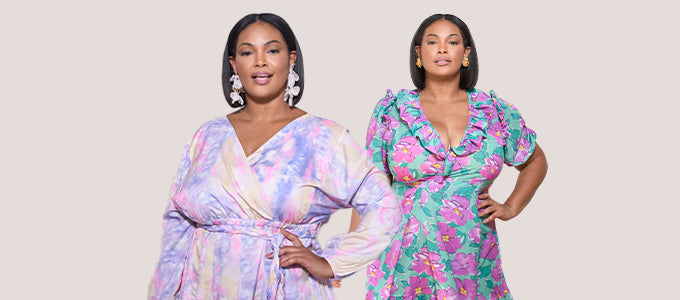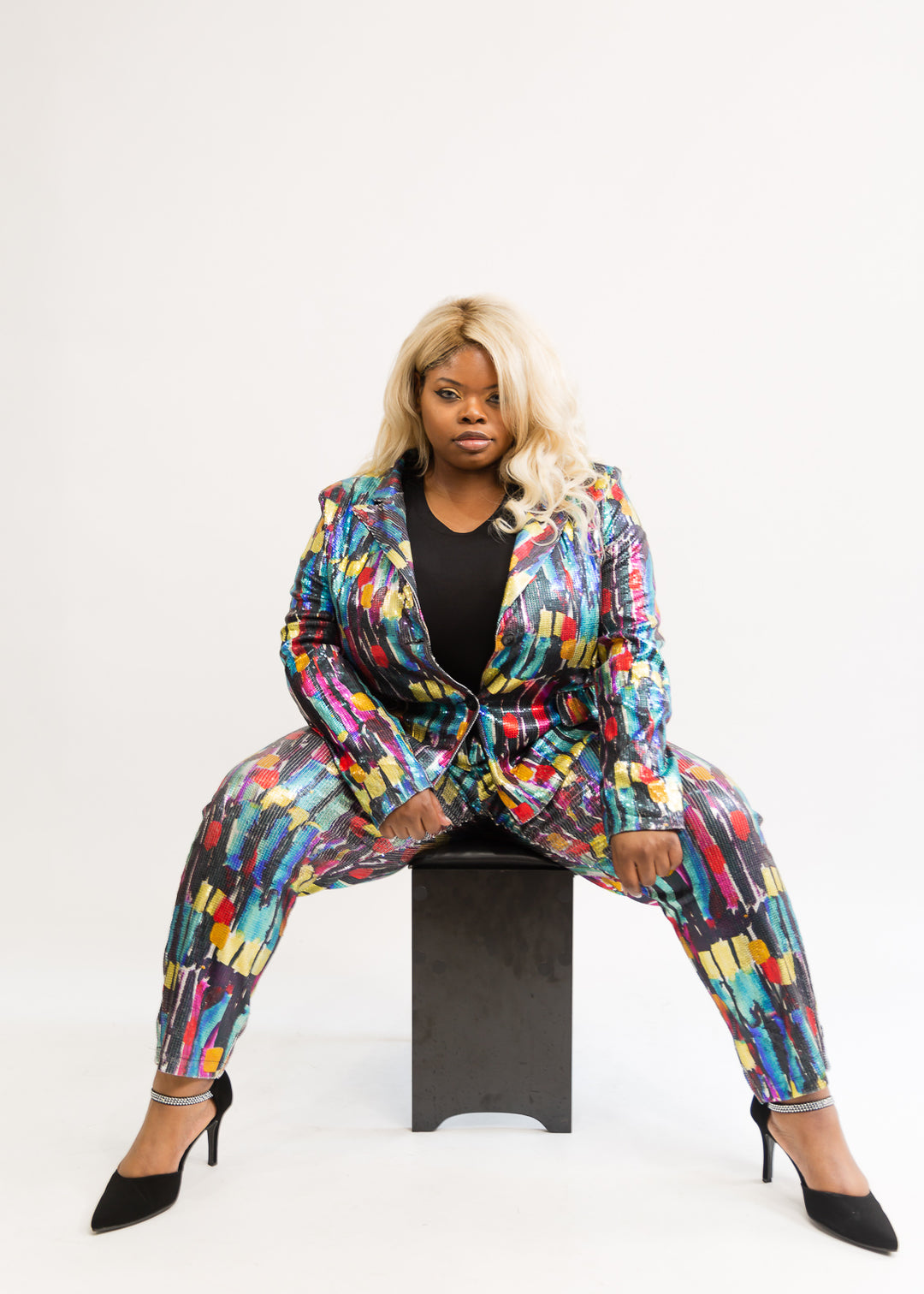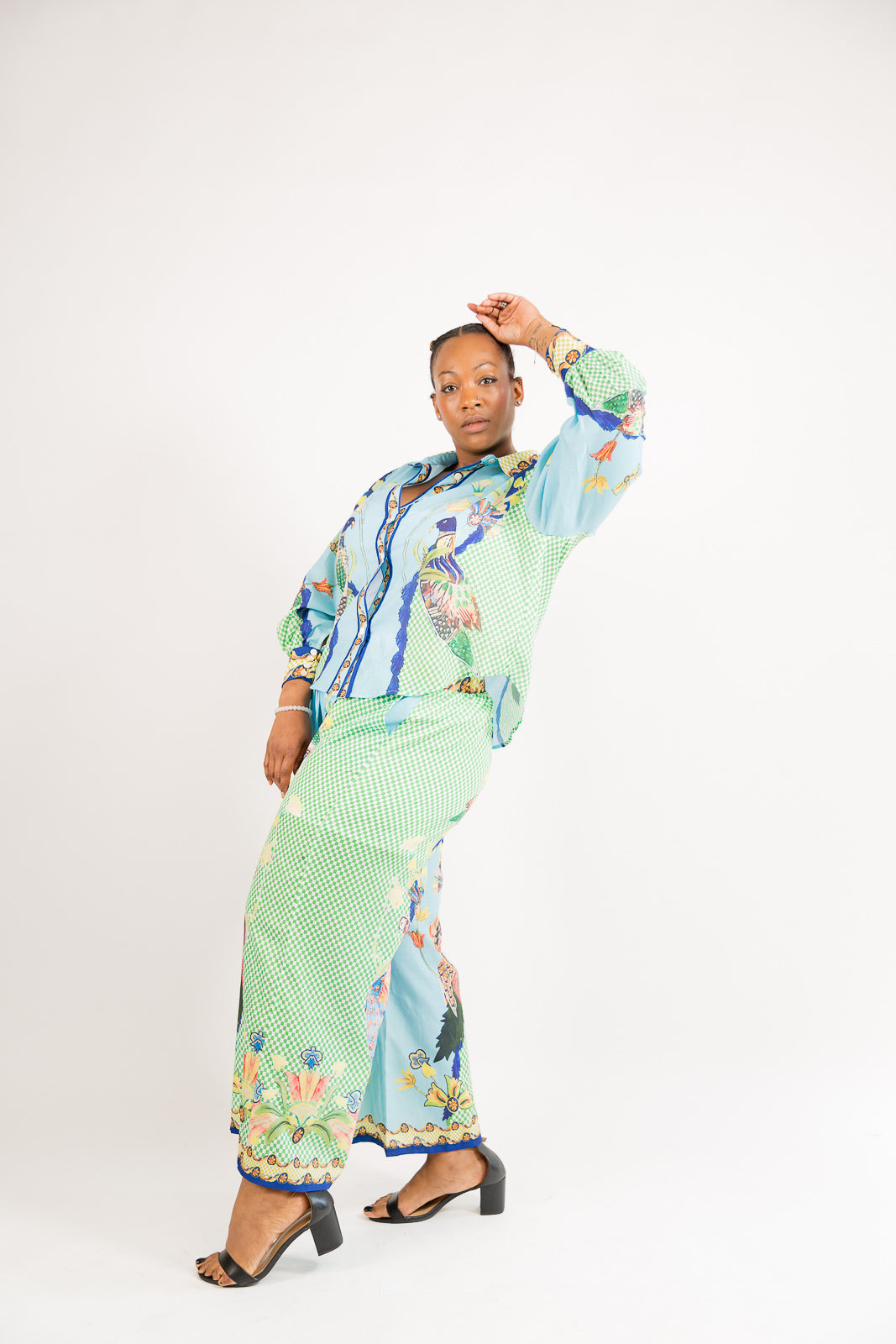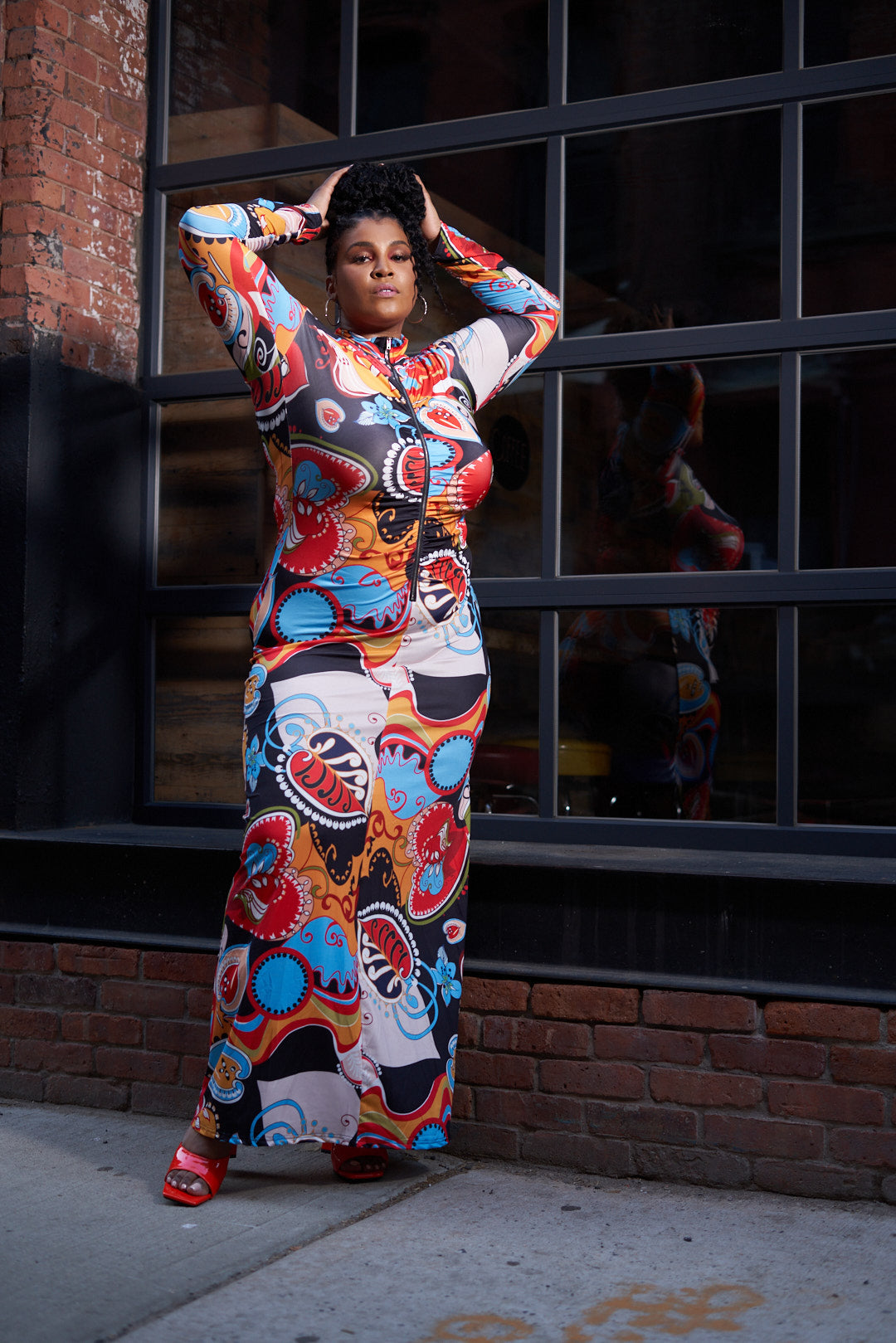The Top 70s Black Hairstyles Modernized For 2022

Hair made big waves in the 1970s and we aren't just talking about the curl pattern. The civil rights movement brought about many changes including the reformation of beauty standards. This shed light on hairstyling and newfound freedom to express authenticity and uniqueness. Icons like Pam Grier and Diana Ross gave fame to the royal Afro, Charlie’s Angels’ Farrah Fawcett blew us away with feather-like hair, Donna Summers reign with big bold curls, and Cher gave us inches. Many of these retro looks are back and here to stay, but we aren't suggesting you go get your mullet cut just yet! Choosing the right vintage style for you should include a little research about maintenance, hair type, and personal aesthetic. Plus, knowing what is trendy will be helpful when you decide it's time for a new look. Here are the timeless Top Hairstyles Inspired by the 1970s.
IN THIS ARTICLE
- SHAG|
- BLOWOUT|
- PERMS |
- BRAIDS & CORNROWS|
- DREADS|
- UPDO|
- FEATHERED|
- AFRO
- WIG
- LONG HAIR
- CURTAIN BANGS
- SHORT HAIR
Shag
Zendaya wearing curly Shag for Variety mag
The shag is one of the most popular hairstyles of all 70s hairstyles. It’s the perfect mix of hippie and glam. Many stylists would agree that the shag works beautifully on all curl types from wavy and loose curls to tight coils. There are many ways to add versatility to this style using bangs and length. However, this is not a DIY haircut unless you are trained with the shears. We recommend achieving this look with the help of a professional hairstylist. A pro can help choose the cut that compliments your face and vibe. Maintaining this earthy look is easy because it's ready to go just use a styling cream to define your curls, and a gel to minimize shrinkage.
Blowout
Tracee Ellis Ross rocking a blowout with red lips
Bring the drama with a blowout because we are blown away with these looks. The first 70s celebrity that comes to mind when thinking about the blowout is Farrah Fawcett. The “Farrah flip'' has gained popularity again with a trend that is going viral of people of all ethnicities trying the style. What is a blowout? Essentially, a blowout is a process of blow-drying the hair into a style using a variety of brushes and a hairdryer. There would usually be no curl irons or flat irons involved and you can still achieve different types of curls or subtle waves. The maintenance of disco hair is involved due to the reverting nature of afro hair textures, but there are ways to help your new do keep the shape. First, reduce exposure to water like rain, sweat, and the shower. Next, sleep with a satin pillowcase or bonnet. Finally, use a dry shampoo to reduce oil and keep hair fresh.
Perms
Mariah Carey with beautiful Curl Perm
There are 2 different connotations to the word “perm”. In the black hair community, a perm or relaxer is the chemical process of permanently straightening hair. Another meaning, and for the context of this post, it’s a semipermanent chemical process of adding curls and volume to otherwise straight hair. There is so much to be said about the transformation of ideas and images of beauty during the 1970s. As afros and natural curls were embraced and became mainstream, so did the use of curl perms to achieve a similar look. Many celebrities like the glamorous Barbara Streisand and artist Bob Ross sported their permed tight curls inspired by the social revolution and the advocation for acceptance and peace. The process of achieving a perm takes time, so you should expect to spend at least 5 hours at the salon. However, this all depends on the length of your hair, the size of curls you desire, and the expertise of your stylist.
Braids & Cornrows
Saweetie showing off her Knotless Braids
Among the more natural styles, we have braids and cornrows. Braids and cornrows have been a constant style choice for centuries in the African American community. There is an array of lengths, designs, sizes, and hair accessories like beads and berets to add and show your style. Famous 1970s icons like Cicely Tyson and Linda Wells showed us how to rock braids and cornrows uniquely and are an inspiration for many to this day. Depending on how intricate the pattern is and whether or not you’ll have hair extensions you can expect to pay upwards of $200 for the style. To go for the 70s look try a longer braid style with a middle part. Using the proper hair care tools like a night scarf and oil sheen your style can last up to eight weeks. This saves so much time when preparing for your day.
Dreads
Lisa Bonet and her lovely locks
Dreadlocks are the universal hairstyle for Rastafarians in Jamaica, but it wasn't until Bob Marley and Reggae music gained popularity in the 1970s that the style became mainstream across the world. Pop culture quickly accepted the Jamaican-born sensation, his cultural pride, and principles. Later, other stars like Whoopi Goldberg and Basquiat would further popularize the style too. Dreadlocks are the number 1 low maintenance style especially if you decide to freeform them. Freeforming locks require no retwisting because they form natural locks over time. Otherwise, you can start the locking phase by applying starter locks. Starter locks are created by sectioning 40 - 110 equal parts of hair and neatly coiling or twisting with a special hair gel. Usually, you only have to get a retwist every one or two months.
Updo
Beyonce sporting a sleek ponytail up with side bangs
In the 1970s, Updos were the go-to style for attending elegant events like galas and weddings. Since updos are so chic, they continue to be a red-carpet-ready hairstyle today. Many different variations have been created for all hair types. You can have relaxed hair, braids, dreadlocks, or natural hair and still achieve an updo. The most simple way to do your updo has been trending as the “messy bun updo”. Simply adjust your hair to make a loose bun, tuck the flyaways and pin it up. Hairspray was a staple for updos too and allowed the style to hold in place. Stylists’ also used hairspray to add volume. You can add side bangs or accessories to make your updo more unique.
Feathered
Voluminous feathered hair on Ciara
Go big or go home is the vibe when it comes to feathered hairstyles. Farrah’s flip was full of volume because the 70s was the time to turn it up. This hairstyle can be achieved best with rollers or curling iron with larger barrels. The more layers your hair has the better and more dramatic your feather will flip. Diana Ross also rocked feathered hair and she maintained it with roller sets every night making this style more on the high maintenance side. However, it is a glamorous look that is coming back, so if you decide you’d like to try it out just make sure you have your wide-tooth comb with you at all times.
Afro
Solange with a glorious natural Afro
Is it even possible to talk about the 1970s without mentioning Afros? Diana Ross was one of the pioneers to show off her regal crown with fullness usually performing with a voluminous natural style. Pam Grier’s afro boldly became a symbol of power as she was one of the first African American female action heroes. Along with the likeness of Angela Davis, everyone wanted an Afro simply because they were cool. African Americans wanted to move towards an authentic expression of beauty which meant wearing their hair naturally. The Afro hairstyle works best when your hair is blown out, and you’ll want to secure your blowout every night with braids or twists to be fluffed back out with an Afro pick in the morning.
Wig
SZA wearing a wavy wig with blonde streaks
Among the popular 70s hair trends are wigs. Wigs are a solid option because they make any hairdo possible and accessible. In the 1970s wigs were highly advertised as alluring and life-changing. Everyone including influential celebrities like Donna Summers and Tina Turner wore wigs because they made changing hairstyles so easy. Today wigs are a multi-billion dollar industry as producers have made them more comfortable and of higher quality. Some wigs are simply pinned on and other hairpieces can be classified as semi-permanent. Synthetic wigs are more affordable, but will not last as long as human hair wigs because of the nature of the fibers used. However, human hair wigs must be managed and cared for like real hair, so it's important to wash, use conditioner, and roller set them regularly.
Long Hair
Erykah Badu with long silky hair
We can’t get over that ultra-long, middle part style famed by Cher in the 1970s. The younger generations adopted this look and often added bangs, a couple of tiny braids, or headbands to adorn. Long hair can frame your face nicely and gives a laid-back appeal. However, managing long hair needs patience and care to avoid tangles and knots. Also, bone straight hair may include lots of flat ironing, so keep a good heat protectant on deck. If you have natural waves or afro hair consider allowing your natural texture to shine for this style reducing constant straightening. Long curls were popular too. Diana Ross and Donna Summers graced stages with long voluminous curly hair. Using hair extensions for longer hair makes the style look fuller, protects your strands, and proves the option for extra inches.
Curtain Bangs
Mary J Blidge with gorgeous blonde curtain bangs
Curtain bangs were all the craze during the 70s. They scream approachable, soft, and feminine. They are now coming back on the scene to start a show. Curtain bangs were usually accompanied by feathered layers and disco hair like the famous Farrah Fawcett inspo, but the 1970s hairstyle can be worn with a variety of looks including a bun or bob-style haircut. If you want a cute way to frame your face this would be a nice choice. In addition, as your hair grows you can continue to style your hair with a natural layering effect, unlike blunt bangs that can be too sharp and edgy.
Short Hair
Rihanna with an iconic pixie cut
As women began to feel more empowered they also felt the freedom to wear shorter hair. Radically short hair will change your look and bring a bright focus to your face. Whether you want a neat Afro like Nina Simone or a pixie cut like Twiggy, getting the cut is a bold statement of independence and strength. Styling time will be a lot shorter, no pun intended, and there won't be a big decision to make about how you want to style your hair. For many with short hair, the hair care routine is just a process of wash and go with a touch of leave-in conditioner or gel.
Ahh, 70s trends are just so fabulous! Which one would you love to try out?






Leave a comment